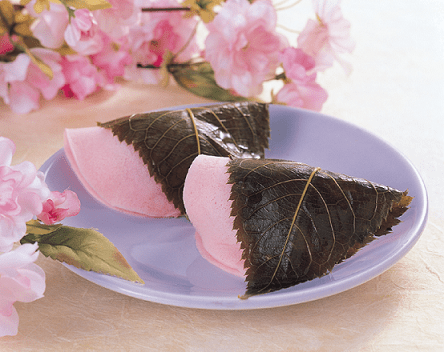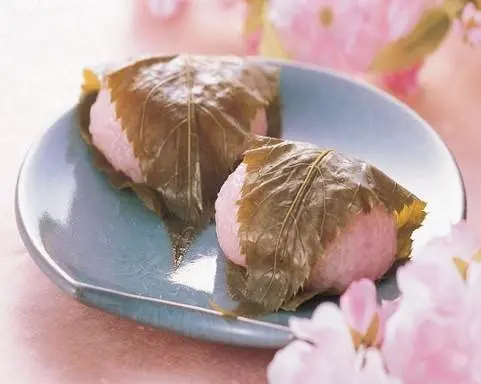Start planning your trip


The typical Japanese sweet of spring is definitely sakuramochi - especially popular in the season of the cherry blossoms. There are two different varieties of sakuramochi - one from Eastern Japan (Kanto) and one from Western Japan (Kansai).
Wagashi are Japanese sweets with fascinating flavors and designs, intended to embody the four seasons.
The prototypical wagashi for spring is sakuramochi. Sakuramochi is a traditional wagashi inspired by the season of the cherry blossoms. It consists of a pink-colored glutinous rice (mochi rice) cake, filled with anko paste (*1), and wrapped in a cherry blossom leaf which has been pickled in salt. The salty flavor of the cherry leaf is what makes sakuramochi unique. It’s said that the salty tang of the cherry blossom leaf intensifies the aromatic elements, and lends a herbal, faintly-sweet taste to the scent of the sakuramochi.
There are actually two varieties of sakuramochi. The variety which originates in the Kanto region, Chomeiji sakuramochi, got its name from the place where sakuramochi was first created - Chomeiji in Sumida ward. It has a distinctive shape, with a flat piece of mochi rolled around the anko filling.
The Kanto region variety of sakuramochi appeared approximately 300 years ago. The founder of Chomeiji Sakuramochi, a well-established shop in Mukojima, Sumida ward, came up with the idea for sakuramochi while he was pickling casks of cherry blossom leaves with salt, and his shop was the first place to begin selling it.
It is said that the mochi cakes wrapped in cherry blossom leaves were sold at the gates of Chomeiji, a temple in Mukojima.
The other variety of sakuramochi, which originated in the Kansai region, is called Domyoji sakuramochi, and it generally became popular in the area around the end of the 18th century. This manju-shaped variety (*2) is made of Domyoji flour, produced by soaking and steaming rice, then drying it out and coarsely grinding it. This glutinous rice flour dough is then wrapped around the anko filling.
*2 Manju: sweet buns made by kneading wheat flour into round shapes, stuffing them with anko or some other filling, and then steaming them.
It is said that Domyoji flour got its start when it was consumed as a preserved foodstuff in the Domyoji area of Osaka. The Sakuramochi cakes made with Domyoji flour have a characteristic granulated texture that people enjoy.
The differences between Domyoji and Chomeiji sakuramochi aren’t just cosmetic; they have totally different textures, as well. In comparison to the past, you can nowadays try out both varieties no matter where you are. Sakuramochi are so beloved by Japanese people that in the spring, they’re not sold only at stores specialized in Japanese confectionery. You can find them also at supermarkets or even at convenience stores.
When visitors to Japan are trying out sakuramochi, there is one question they typically ask: “Can I eat the leaf, or should I remove it before eating the sakuramochi?”
It’s actually up to you. If you eat the leaf together with the sakuramochi, you can enjoy the aroma of the leaf, a little saltiness, and additional texture.
However, the scent of the cherry blossom leaf stays on the sakuramochi, so even if you take it off, you can still enjoy the aroma. If it bothers you, it’s fine to remove the leaf.
By the way, sakuramochi is colored pink to evoke the image of cherry blossoms. However, there are some shops which purposely avoid this process, and specifically offer them up without adding any coloration. The sakuramochi at these shops will be white.

